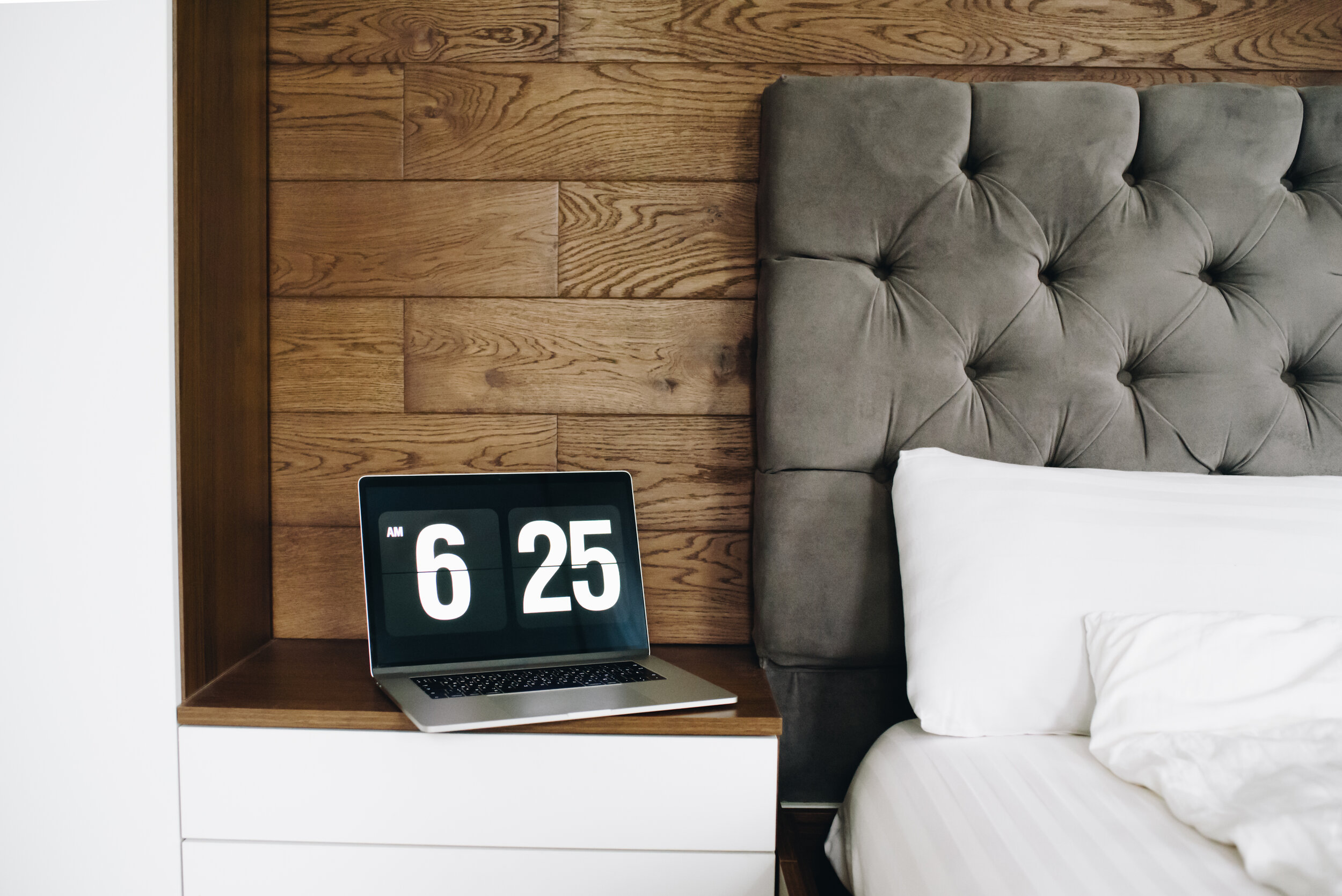How to Cope with Work Burnout During a Pandemic
Every year, the first few months are always the most exhausting because of the increased marketing needs that come up with the holidays and my clients’ focus on hitting Q4 and end-of-year revenue goals. By February, I had already booked reservations for several trips in response to the increasing burnout that I couldn’t ignore for much longer. Then, the stay-at-home order was in place faster than I could process in response to the COVID-19 pandemic that swept through the nation. Buh-bye, travel plans and friends’ wedding celebrations.
All I could think was… how am I going to fix my burnout now while being forced to stay and work from home? How am I going to set up boundaries or find some sort of remedy to receive the same level of rest when all my travel plans vanished overnight? Although I was (and still am) extremely grateful for the work that I still have while more and more of our workforce is becoming furloughed/unemployed, I still couldn’t ignore the fact that I was in need of a serious break, and that now, any semblance of that appeared to be gone. During this time, I’m sure there were many others who were feeling just fine at work, but are now even feeling the symptoms of burnout from the collective trauma of the pandemic itself, not to mention the constant threatened loss of income, personal health and the actual loss of all normalcy we once had.
With over a month of the stay-at-home order now under my belt, I’ve come out the other side feeling better than I ever expected, but it definitely didn’t come without the struggles of trial and error to find the right routine. Thanks to the initial recommendations of my therapist who actually advised that I implement structure into my daily life to help with grief, I found that it actually helped me not only rise up from my state of sadness, but also gave me the mental clarity and refreshment that I needed to keep moving forward.
Separate your work and personal space.
My next desk upgrade will definitely be a system to hide these ugly cables.
Since I’ve been self-employed for 3 years now, I learned early on the importance of establishing a work area in my home to avoid this very thing we’re talking about here — burnout. My setup is located in my living room and is made up of two desks placed side-by-side to support my laptop stand, two monitors (yes, two, and I freaking love it), my Bose speakers and USB charging station. I have all my photography equipment located on or under my desk area as well to further enforce the separation of work and personal life.
However, I know that having your own dedicated workspace isn’t always possible, especially when you have multiple roommates or live in a small apartment, so it could be as simple as maintaining the discipline of —
staying out of your bedroom and designating the kitchen table as a place of business only
putting away your work equipment every time you’re done with your work hours
Although it may seem ineffective to adopt the practice of stowing away your work-related items during off-hours, it can help eliminate ANY reminders that might quickly distract you from the rest you intended to take, leading you to situations like the realization that it’s 8 pm on a Sunday night and you’re already at the front door of a new work week.
Enforce strict working hours.
Now that you’ve created a strict work territory in your home, it’s time to get into the practice of strict self-government. Given the fear of loss of income that looms over all of us lately, it’s so easy to work ourselves into oblivion to try to control the uncontrollable. However, if you don’t have your mental and physical health in check, you won’t have ANY gas left in your tank to help you continue performing at your best, which will directly impact your ability to keep your job, or in my case, continue running and building my business.
To guard my mental health while still tending to my responsibilities, I’ve set my “I’ll be sitting at my desk and working” hours from 9am to 5:30pm, with a HARD cutoff at 7pm for days when I have to meet certain client deadlines. It’s also important to keep in mind that “long hours don’t mean good work,” but rather that “highly efficient, productive work is more valuable” according to a Mayo Clinic professor of medicine, James A. Levine.
Schedule regular appointments with yourself to exercise.
If you’re following me on Instagram, you’ve probably heard about my 30-lb. weight loss, which partly had to do with my commitment to regular exercise. I had gotten out of the practice of working out a few times a week, but I’ve never forgotten what it had did for me outside of just weight loss; it always seemed to melt away my anxieties and harebrained thoughts, and would replace them with renewed motivation, strength and clarity.
I knew that I had to return to that place again, so I promised myself that I’d commit to a month of working out at least 3 times a week to see if it’d fix anything before venturing out and looking for some other solution. After only 2 weeks into my commitment, I already feel like myself again, but so much better. Fortunately, you don’t have to take my word for it. The U.S. National Institutes of Health also put this hypothesis to the test and found that cardio and resistance training effectively increased “well-being and decreased psychological distress, perceived stress, and emotional exhaustion.”
Although the majority of my fitness journey took place in a gym, there’s no reason why you and I couldn’t continue it at home or outdoors. Personally, I’ve been exercising solely outdoors because my resistance training CAN involve a lot of jumping, which I’m uncomfortable doing in my living room because I don’t want to anger my 1st floor neighbors. However, given that social distancing is a major concern, I’ve scheduled most of my workouts to take place in the early mornings, specifically around 6am or 7am, to avoid frequent run-ins with other passersby.
Dedicate at least one full day to rest every week.
This brings up two valid questions for workaholics like me that struggle to fully step away and disconnect:
Do you live to work, or do you work to live?
Is your life’s success or value measured by your level of productivity or the results of your work?
It may have been the trauma and overwhelming stress of the pandemic rather than work itself that led you to your burnout, but it’s up to YOU to reverse it and take care of yourself, and that starts with taking back control of your life. That starts with the following tasks:
Plan your weekly day of rest — This could be a weekday, Saturday or Sunday. The key lies in treating it with as much respect and seriousness as you do with showing up to work on time and getting things done.
Control your devices and your thoughts — Put away any device(s) that tempt you to think about work. If there are controlling thoughts or tasks that you think of that make you want to work NOW so that you don’t forget come Monday morning, write them down and place them with your work things so that you can tend to it right when work hours begin again.
Pencil in time for your priorities — If you don’t feel like you ever have enough time for friends and family, make THIS day your day for all of that. If there are personal goals, such as hitting that stack of books you’ve been hoping to finish by the end of the year, schedule an hour for that. If you don’t intentionally make time for the things you enjoy or would like to accomplish, it’ll never happen.
Get in the habit of journaling.
COUNT YOUR BLESSINGS DAILY.
According to an article published by two psychologists, Dr. Robert A. Emmons of the University of California–Davis, and Dr. Michael E. McCullough of the University of Miami, covering the results of their “Experimental Investigation of Gratitude and Subjective Well-Being in Daily Life,” individuals that were required to make a daily list of things they were grateful for experienced higher reported levels of “alertness, enthusiasm, determination, optimism, and energy.”
Sounds like the opposite of burnout, am I right? The easiest way to get started is to write 10 things you’re grateful for everyday, and after a week, up the ante by challenging yourself to write 25 or more in your daily list. Keep in mind that specificity is important in the effectiveness of your gratitude practice. Instead of writing down that you’re thankful for your family, you can personalize it by writing that you’re grateful for your sister who took the time to buy you your favorite lunch during her grocery store trip.
WRITE OUT YOUR THOUGHTS AND EMOTIONS, POSITIVE OR NEGATIVE.
There are so many styles of journaling that you can use to process your thoughts, but the most important aspect of it is to just start. Many times, the act of writing out what you’re thinking or feeling will help you naturally reach solutions and/or find the positive aspects of your situation that you may not have been able to extrapolate if you just let those brooding thoughts and feeling fester in your head.
If you want to experiment with different methods to see which works best for you, or to perhaps mix things up, here are a couple of resources I’ve found online to help you get started:
Psychology Today — Discover 8 Journaling Techniques for Better Mental Health
New Life Foundation Thailand — 20 Journaling Prompts For Mental Health & Emotional Balance
If you have any additional tactics that have worked for you that aren’t in this list, comment below! I look forward to hearing how this helps you kick burnout to the curb.


